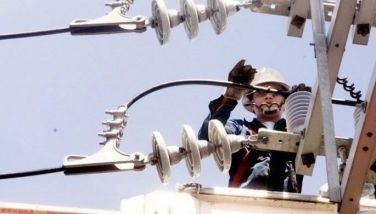Building back must be better – and faster

Super Typhoon Rolly has forced our attention to Catanduanes, the 12th largest island of the country, home to about 200,000 Filipinos, and top producer of the world’s abaca fiber. Rolly has dealt a breath-stopping punch to the gut of this island, with its maximum sustained winds of 215 kilometers per hour regarded as the world’s strongest so far this year.
Despite its robust contribution to Bicol’s economy, Catanduanes has largely been under the radar of the nation’s headlines, emerging only when super typhoons like Rolly ram through it, which has happened only about two times during the last two decades.
Catanduanes, including large parts of the Bicol region, had provided a shield that significantly diminished Rolly’s destruction to lives and property in Metro Manila, although it still left an estimated P7.5 billion in damage to agricultural produce and infrastructure.
If there is anything to thank for, Rolly does not make it to the list of the top costliest typhoons that have hit the country in more recent history, and comparatively left less damage than Ondoy in 2009, Pablo in 2012, and Yolanda in 2013.
Thanks to the relatively robust line-up of laws dealing with disaster risk reduction and management, the country now has in place a working system that is able to identify potential threats from typhoons, volcanic eruptions, and storm surges.
Thus, calls for evacuation of communities when there is imminent danger have been implemented early enough in many cases, reducing drastically the risk of more lives lost.
Getting back on track
It is in building back from the damage of natural disasters that we need to focus on. As per the country’s experience with Yolanda, it took years for ravaged cities and municipalities to get back on track, even with the outpouring of international aid.
Seven years after Yolanda struck, the swathe of affected communities are still trying to piece back their lives through a variety of government initiatives, many mostly focused on providing for new homes to replace those flattened by the typhoon.
Mismanagement and corruption have been the biggest accusations that hindered a more meaningful return to normalcy for the 4.1 million people affected by Yolanda, many of them fishermen and farmers whose livelihood opportunities were disrupted.
The most visible signs of recovery in the hard-hit areas are newly-built houses for those that have lost homes, although there has been a slow take-up in occupancy; many beneficiaries have complained that the relocation sites are far from their source of income.
True meaning of resiliency
In the end, getting back on track is all about giving to those affected by these disasters the means to earn a livelihood that will provide food day to day for their families. In most instances when devastation occurs, the poor are most vulnerable when their source of income is lost.
Yolanda should have taught us that building resilient communities in the aftermath of disasters is helping affected people to return to the fold of economic productivity.
In coastal towns, this means giving back to fishing villages the boats they need so fishermen can quickly return to sea and bring back the catch they need to earn money from. For agricultural areas, assistance to farmers during the interim while they wait for the new harvest to ripen should be standard response.
For small business owners, facilitation for bridge financing to mitigate damages to goods and infrastructure inflicted by the disaster should also be on the government’s response agenda. This would be most appropriate for those affected by earthquakes or tsunamis.
For Catanduanes and affected Bicol provinces, disaster mitigation should include getting affected farmers, fishermen, and small entrepreneurs back on their feet. The Department of Agriculture has reported prepositioning bags of rice, corn, and vegetable seeds for planting in Bicol, Calabarzon, and Mimaropa regions to help farmers recover.
Agriculture’s importance
Yet, the government needs to do more, specifically in the area of revitalizing the country’s agricultural program not just as a measure of securing food supplies for the nation, but also as a means of earning revenues for the economy for the longer term.
Catanduanes and many parts of Bicol, for example, need to review its abaca industry, which has been a source of hemp for the fashion industry in past decades. Demand from foreign buyers has weakened, but should be compensated by our concerned government agencies through the creation of new markets.
Coconuts, banana, and jackfruit are major agricultural produce from the Bicol region, but it is also home to niche products like pili nuts, small red chilies (or siling labuyo), and woven bags and mats.
Many parts of the Bicol region remain on the list of the poorest municipalities in the country, primarily because of exposure to typhoons coming from the Western North Pacific Area. It has also three active volcanos, the most active being Mayon in Albay.
Because of this, Bicolanos can be regarded as among the most resilient Filipinos, tried and tested over centuries by the relentless barrage of storms on the lives and livelihoods. And if only because of this, they deserve a better plan of action to help them brace for future disasters and to improve their lives.
Facebook and Twitter
We are actively using two social networking websites to reach out more often and even interact with and engage our readers, friends and colleagues in the various areas of interest that I tackle in my column. Please like us on www.facebook.com/ReyGamboa and follow us on www.twitter.com/ReyGamboa.
Should you wish to share any insights, write me at Link Edge, 25th Floor, 139 Corporate Center, Valero Street, Salcedo Village, 1227 Makati City. Or e-mail me at [email protected]. For a compilation of previous articles, visit www.BizlinksPhilippines.net.
- Latest
- Trending






























